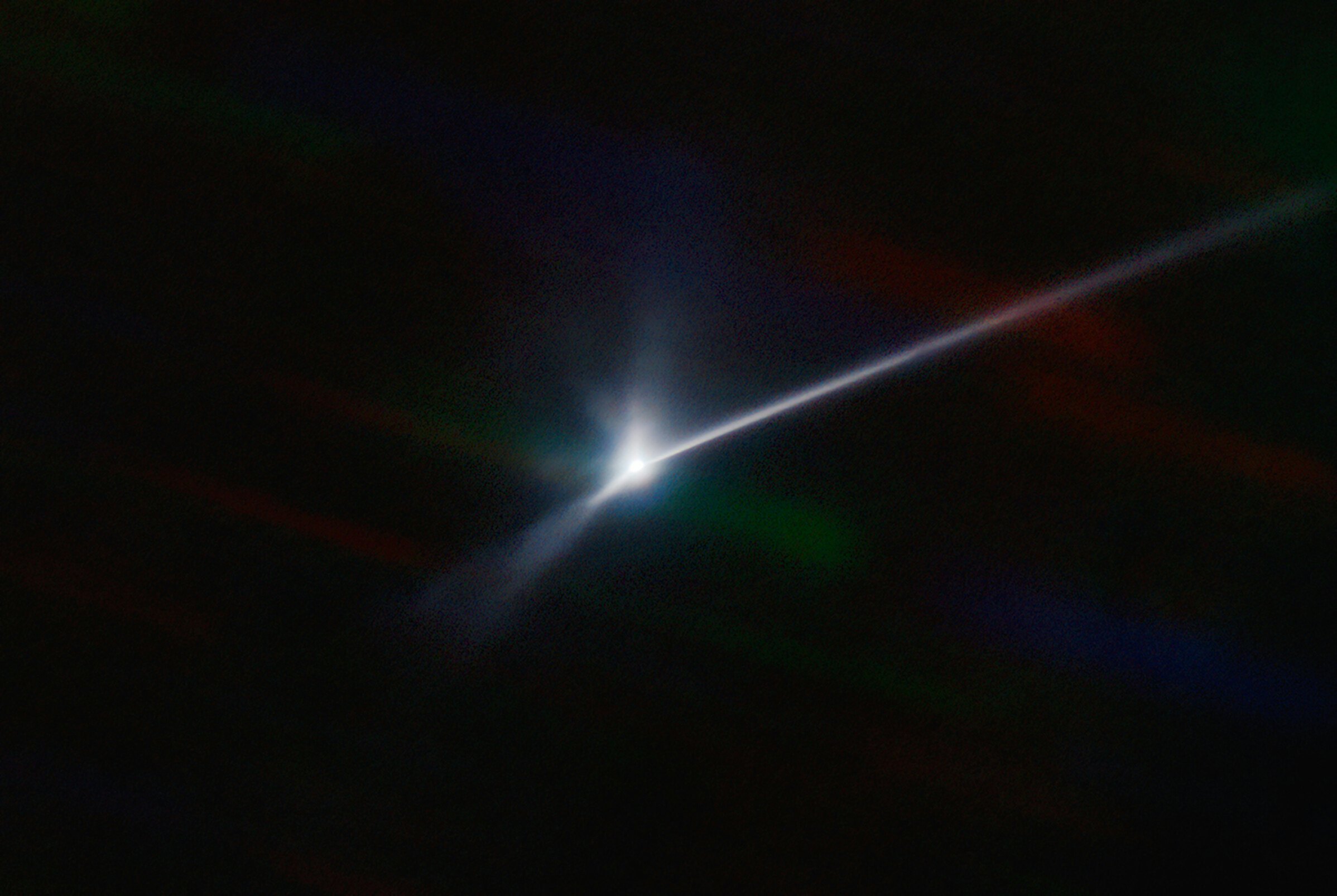
The debris trail from asteroid moonlet Dimorphos is now 10,000 kilometers (about 6,000 miles) long, according to images from a telescope in Chile.
NASA’s Double Asteroid Redirection Test (DART) smashed into Dimorphos on September 26 in the agency’s first planetary defense test. DART’s goal was to help researchers figure out whether we might knock dangerous incoming asteroids off-course to keep them from colliding with Earth — and, crucially, how big an impact would be necessary to pull it off.
It will likely take at least two years before scientists can say whether DART’s “hit the giant space rock before it hits you” gambit actually altered Dimorphos’s orbit around the larger asteroid Didymos. Collecting that data will be up to a European Space Agency CubeSat mission called HERA, which launches in late 2024. But just a week after the crash, it’s already safe to say that DART definitely made an impact.
Astronomers Teddy Kareta of Lowell Observatory and Matthew Knight of the U.S. Naval Academy used the Southern Astrophysical Research Telescope, or SOAR, to check out Didymos in the aftermath of the DART collision. It turns out that NASA’s 572 kilogram (1,260 pound) spacecraft blasted a plume of debris, called ejecta, from the 160 meter- (525 feet) long moonlet, which has now stretched out for 10,000 kilometers behind Dimorphos.

That long tail of rock and dust is thanks to pressure from the Sun’s radiation, which pushes the ejecta away from Dimorphos. It’s the same process that gives comets their distinctive tails, which, like Dimorphos’s new debris trail, always point directly away from the Sun.
Kareta and Knight plan to keep an eye on Dimorphos and its new tail over the next several months, and they’re not alone. Both the Hubble Space Telescope and the James Webb Space Telescope will also check in on the moonlet periodically over the next few months, and so will several other observatories.
All of that data flowing in, at different resolutions and in different wavelengths of light, will help scientists understand how much debris DART’s impact blasted into space, how fast the plume was moving, and whether the impact mostly knocked loose fine grains of dust or big chunks of rock.
All of that information, in turn, will help scientists reconstruct what the ill-fated moonlet’s surface is made of, how solid it is, and the dynamics of the crash. When HERA gets to the crash site in a couple of years, the data telescopes have been collecting will help astronomers understand exactly how DART did (or didn’t) manage to budge the moonlet off-course.







